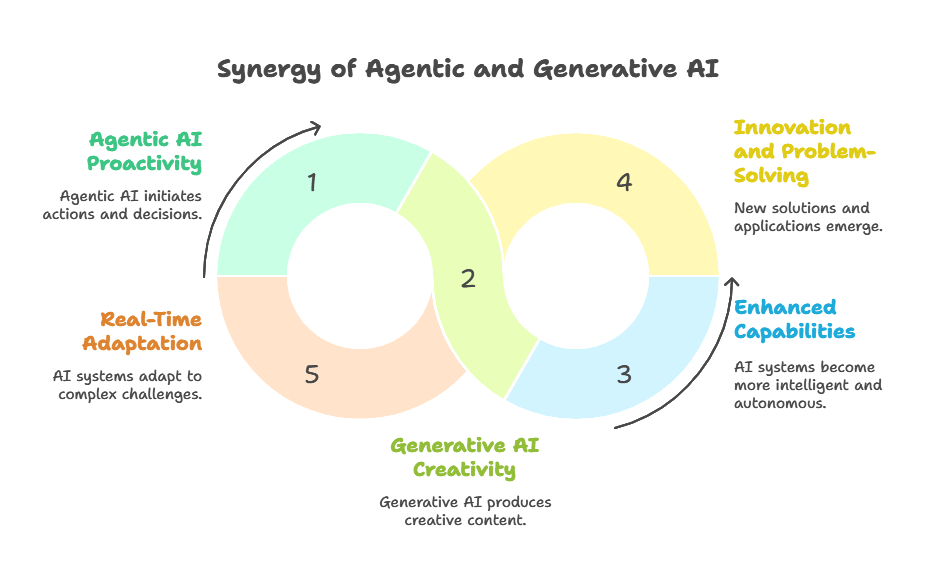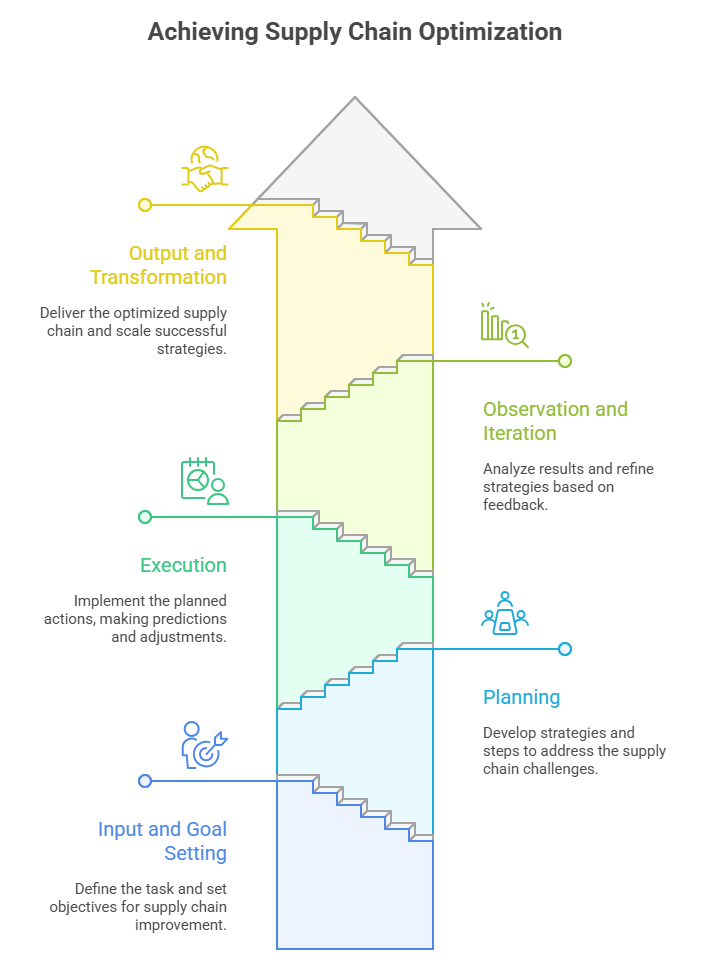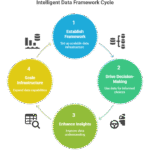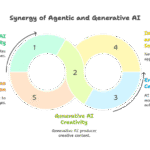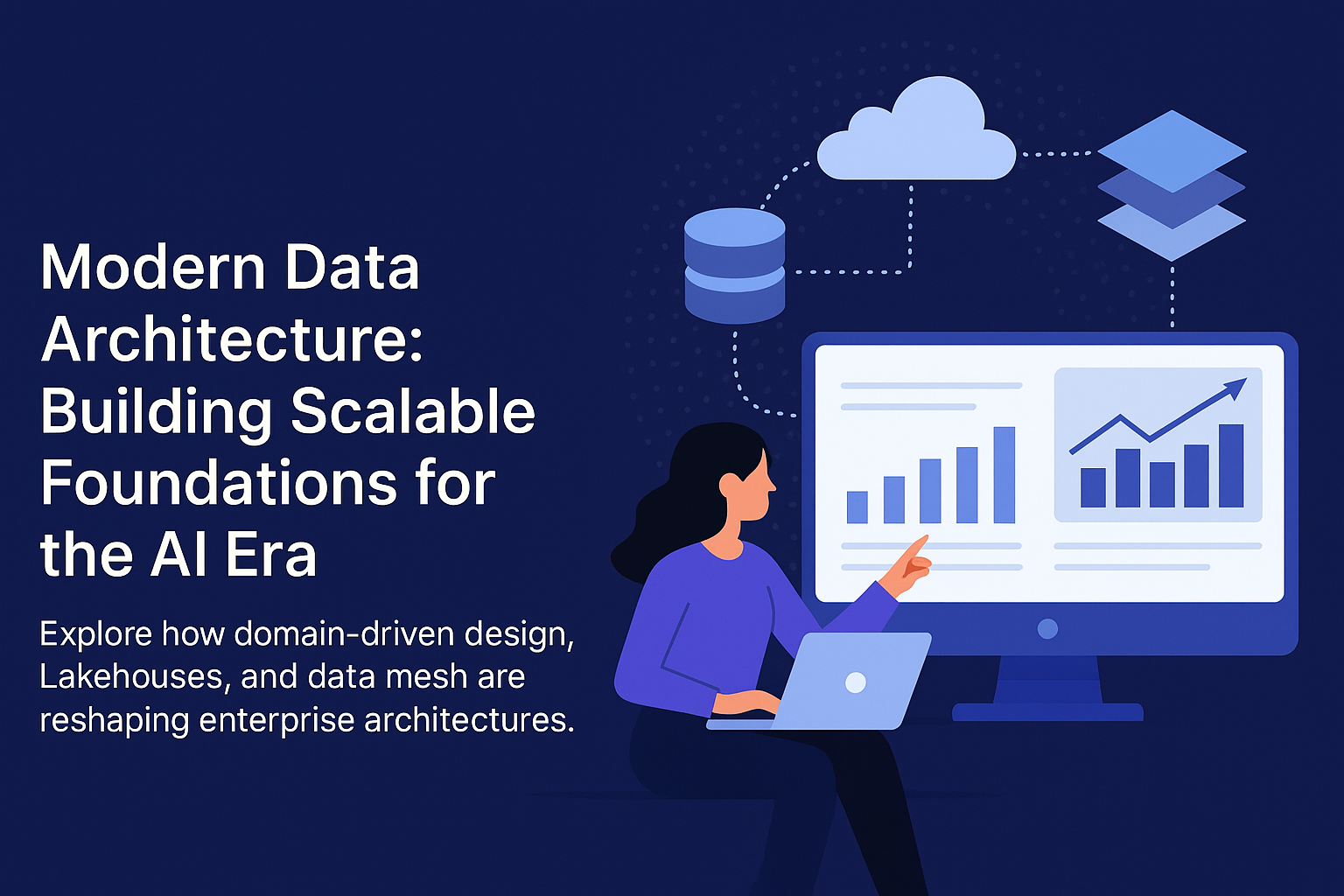Unleash the power of Agentic AI and Generative AI to reimagine how your business thinks, solves, and scales
Hey there, in a world where business changes faster than you can blink, picture this: an AI that doesn’t just spit out ideas but actually comes up with solutions, jumps into action on its own, and totally revamps how you run things right away. That’s what happens when Agentic AI teams up with Generative AI—it’s like a dream team ready to shake up how we innovate. As we roll through 2025, folks like OpenAI, IBM, and Microsoft are already using this combo to boost efficiency and growth like never before. But what does it really mean for your business? Let’s break it down and see how this can fix those nagging issues, like stuck productivity or tough decisions, and how our team at Fifth Square can help you make it happen.
The Dawn of Agentic AI: From Passive Tools to Autonomous Actors
Agentic AI is a game-changer in the AI world—it’s moving from those old-school systems that follow strict rules to smart setups that handle big goals all by themselves, with barely any hand-holding from us humans. Basically, it’s an AI that plans, thinks things through, and takes action on its own to hit those targets, while adapting to whatever curveballs come its way. Unlike the rigid AI we’ve had before, these agentic ones act a lot like people—they check out what’s around them, decide what to do, and learn from what happens next.
Take a look at what’s happening out there in 2025: In finance, these AI bots are watching market data live and making trades on the spot to cut risks and grab better returns. In healthcare, they’re keeping an eye on patients’ stats, tweaking treatments, and pinging doctors if something’s off. Even in cybersecurity, they hunt for threats in networks and lock down problems before they blow up. IBM points out that this stuff shines in messy, unpredictable situations, turning disorder into smooth operations.
This isn’t some sci-fi stuff; it’s real and practical. By now in 2025, agentic AI is taking over jobs that used to need whole teams, so people can focus on the big-picture strategy and creative side.
Generative AI: The Creative Engine Fueling Innovation
Now, flip to Generative AI—it’s the creative powerhouse that whips up new stuff like content, ideas, or even simulations. Built on massive language models, like OpenAI’s o1 series, it doesn’t just crunch data; it creates fresh things, from writing code and making images to crafting custom marketing pitches.
In the business world, it’s changing how we do things across the board. For example, it’s speeding up product design by testing ideas virtually and guessing outcomes, which could cut R&D costs by 10-15%. Customer service? Those chatbots are turning into helpful buddies that give personalized answers, making folks happier and fixing issues quicker. McKinsey’s latest AI report says 78% of companies are using AI in at least one area, with Generative AI leading the charge in creating content and automating decisions.
The real wow factor is when it scales up: Google’s AI tools have bumped up ad clicks by 80% with super-targeted content. In 2025, the trend is all about “AI-first” tools woven right into your everyday business apps, making supply chains smarter and creative work easier.
The Synergy: Where Agentic AI Meets Generative Brilliance
The real excitement kicks in when these two join forces. Agentic AI brings the “do-it-yourself” vibe—the ability to act and adjust on the fly—while Generative AI adds the “smart spark”—that creative thinking and fresh outputs. Together, they make super-smart agents that dream up new fixes, jump on them without waiting, and overhaul how your business runs.
This combo fixes a big gap: Generative AI is great at making stuff but needs direction, and Agentic AI handles independence but craves deeper smarts for tough spots. OpenAI’s o1 models show this off, using generative tricks to polish thoughts, fix code bugs, or tackle tricky problems like quantum physics equations. McKinsey talks about how this breaks the “gen AI puzzle,” where huge potential hits roadblocks in real use.
In everyday terms, it means AI that doesn’t just make a report but digs into it, suggests next steps, and runs the show—like optimizing your marketing by creating content, testing it automatically, and rolling out the winners instantly.
Deep Dive: Architecture and Workflow of Agentic-Generative Systems
To get why this is so powerful, let’s peek under the hood at how it’s built and how it flows. Agentic AI setups are usually modular, like a main “boss” AI overseeing a bunch of specialist helpers, or a team setup where they all work together. The key pieces are:
- Perception Layer: This pulls in data from APIs, sensors, or databases to keep everything in the loop.
- Reasoning Engine: Fueled by Generative AI, it uses big models to make sense of data, spark ideas, and map out plans—like OpenAI’s o1 that keeps tweaking until it’s spot-on.
- Decision-Making Module: Weighs choices using stats or learning from trial and error.
- Action Executor: Hooks up to your tools to get stuff done, like linking to your company software.
- Memory and Learning System: Remembers past stuff to get better over time.
- Orchestration Hub: Keeps all the agents in sync for smooth teamwork.
The process is like a loop that keeps going:
- Input and Goal Setting: You give it a task, say, “Fix up the supply chain for the next quarter.”
- Planning: Generative AI brainstorms options; agentic side lines up the steps.
- Execution: The agents dive in—create predictions, tweak orders, watch results.
- Observation and Iteration: Check what worked, learn from it, and tweak.
- Output and Transformation: Hand over the results and scale what’s good.
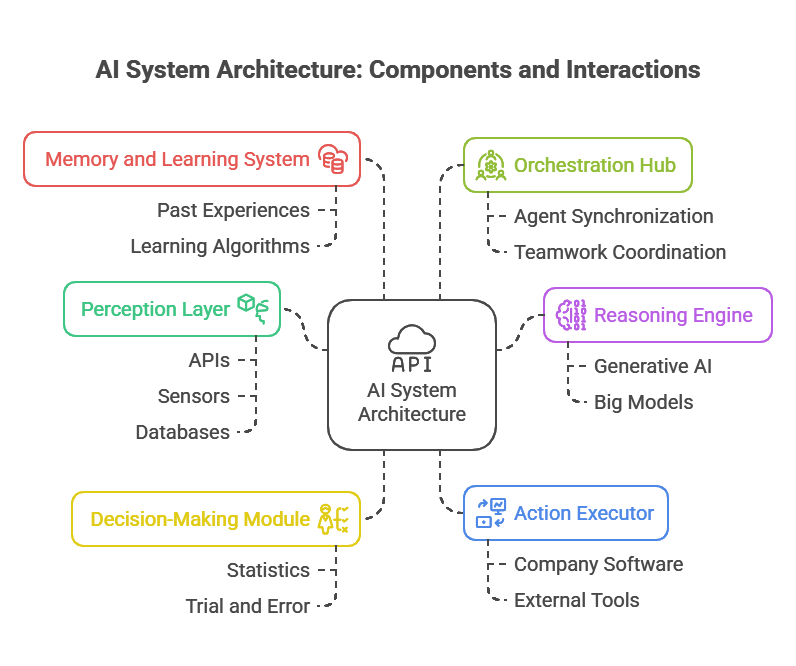
Solving Business Problems: Real-World Impact
Every business deals with headaches like wasted time, data trapped in silos, and slow new ideas—this AI pair tackles them straight on. These systems automate tricky stuff, cutting down process times by up to 70% in things like rules compliance or keeping customers happy.
For real: In retail, agents sort out customer problems 35% faster with custom fixes they handle themselves. Microsoft’s Dynamics 365 is building “self-running” businesses that spot and stop issues before they start. In finance, IBM’s bots manage risks by catching weird stuff early. McKinsey studies show agents simplifying complex jobs, like supply chain tweaks, leading to 2% more sales and huge jumps in engagement.
Bottom line? It lets your business grow without the grind, so your team can chase the exciting stuff.
How Fifth Square Plays a Major Role in Your AI Journey
Here at Fifth Square, we’re all about helping businesses step into this AI world. We craft custom setups that mix Agentic and Generative AI to fit your needs—whether it’s automating IT help, boosting customer chats, or smoothing out supply chains. We pull from what the best in the industry do, making sure everything works together safely and ethically.
We’ve seen clients cut inefficiencies by 40-50% with our agentic flows that think up insights and act on them solo. Teaming up with us isn’t just getting AI; it’s turning your business into a creative, go-getter machine.
Conclusion: Invent Today, Transform Tomorrow
Merging Agentic AI with Generative Brilliance isn’t some far-off idea—it’s your ticket to rethinking how your business brainstorms, fixes things, and grows in 2025. By handling the boring bits and supercharging the cool ones, it solves real pains and opens doors to fresh chances.


